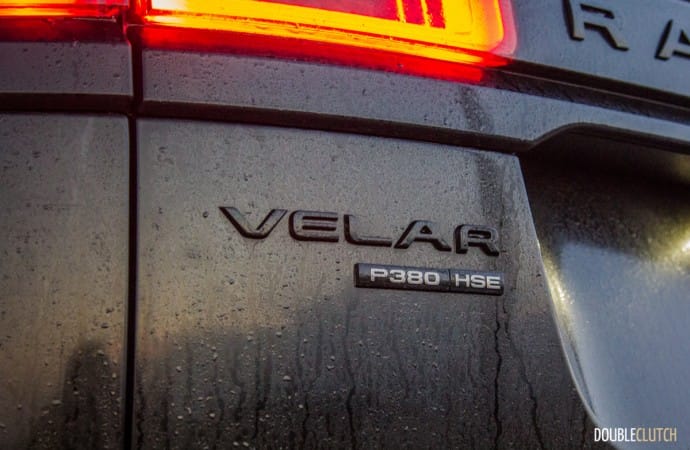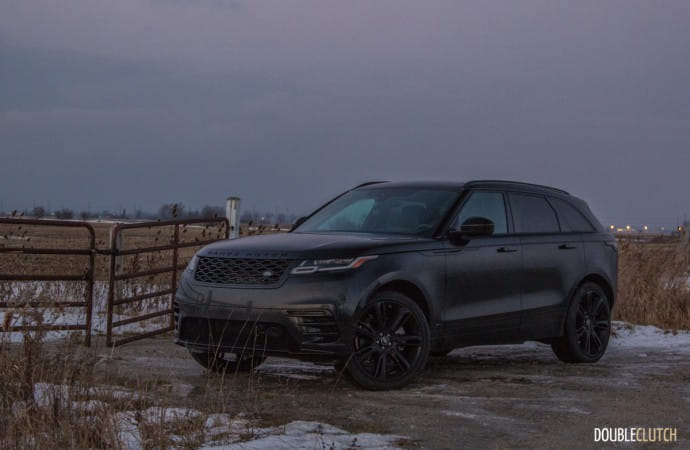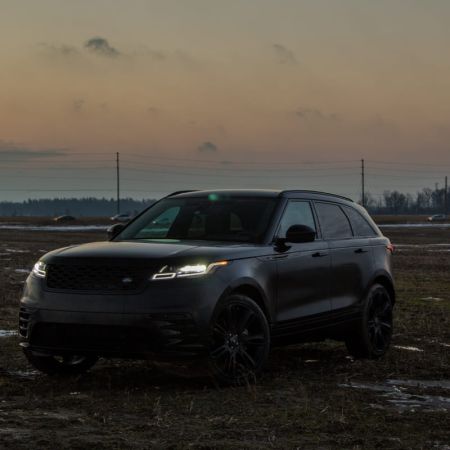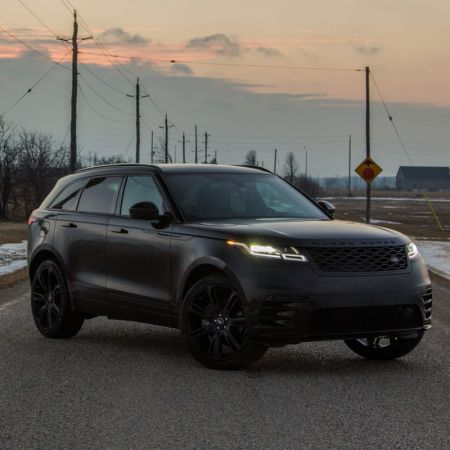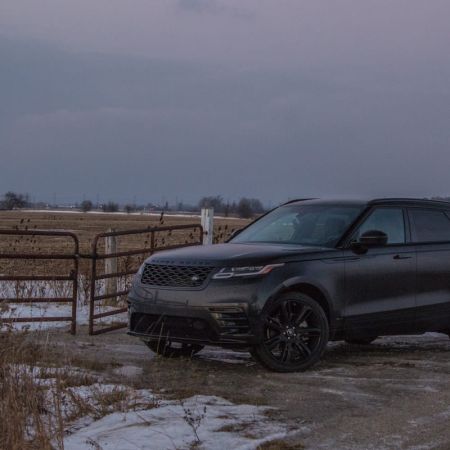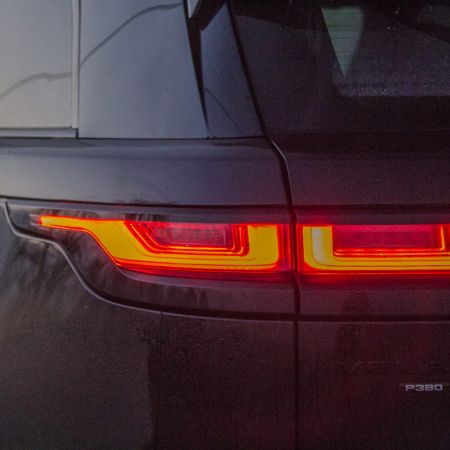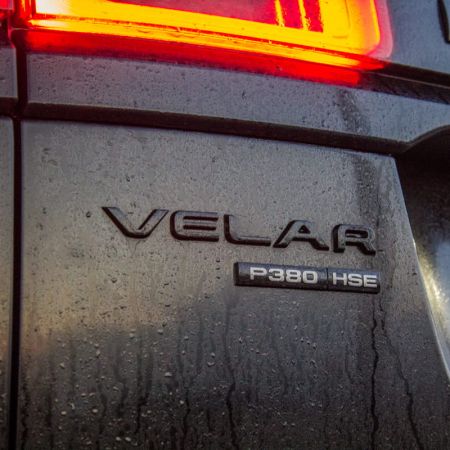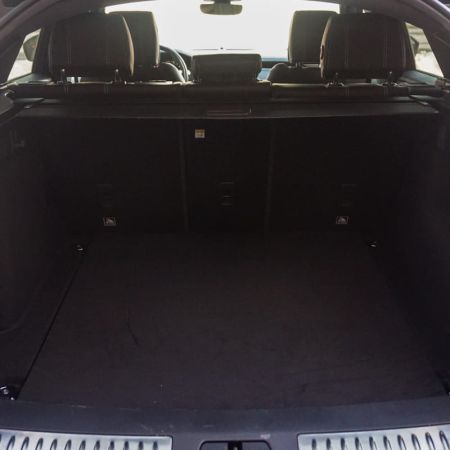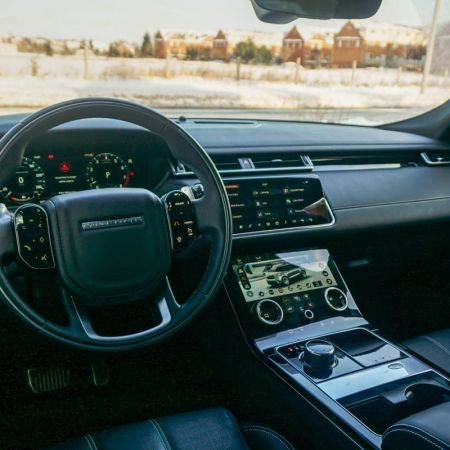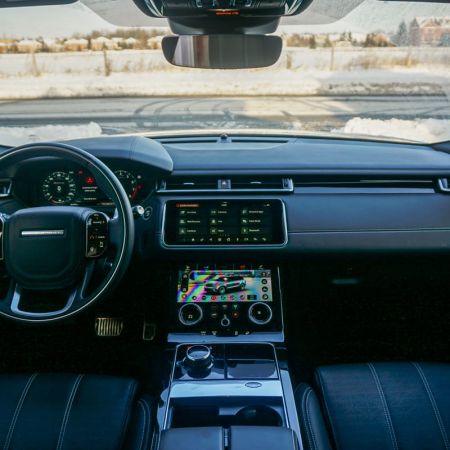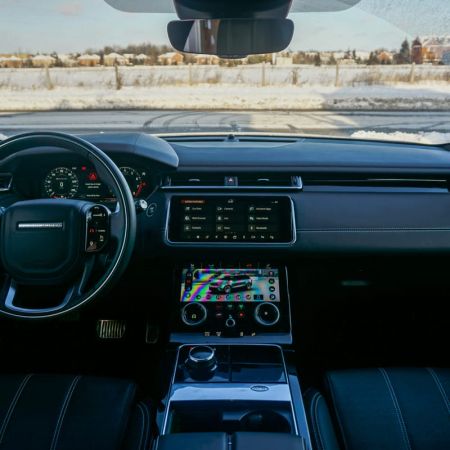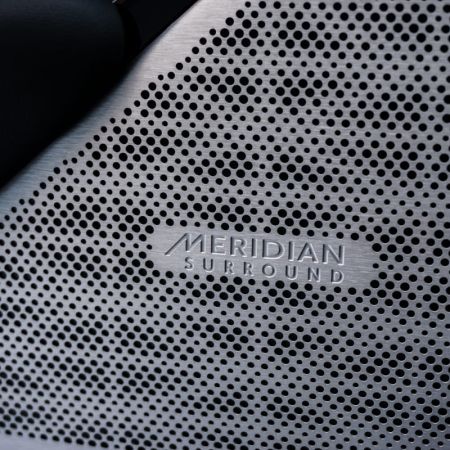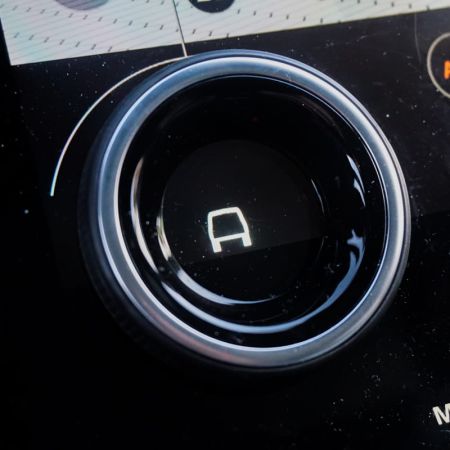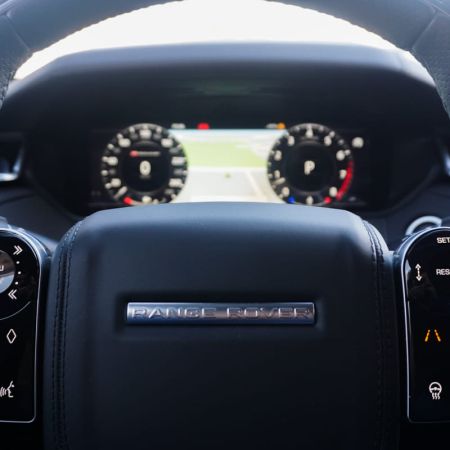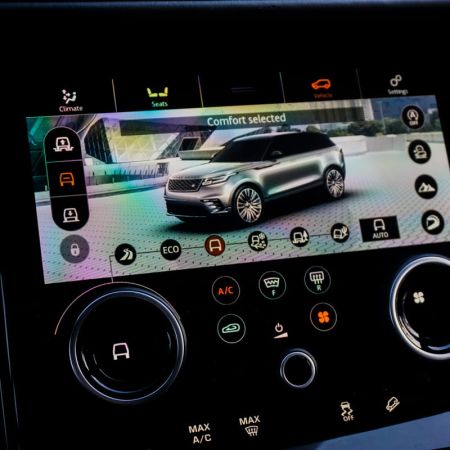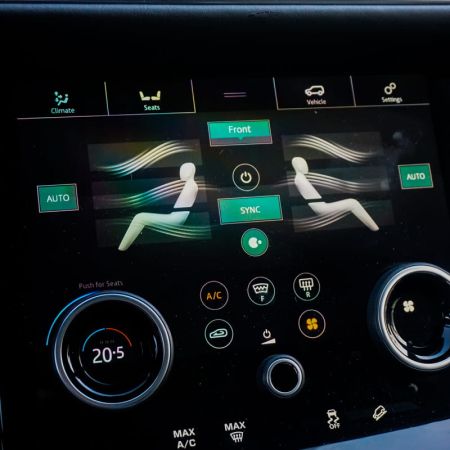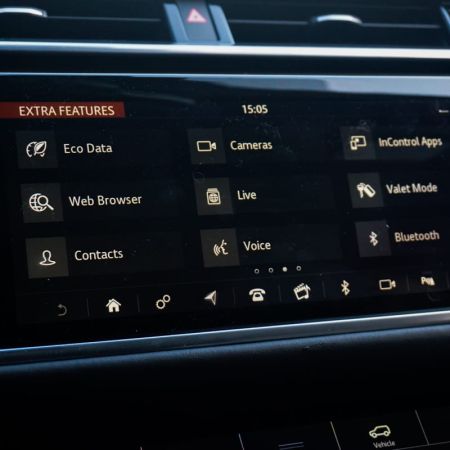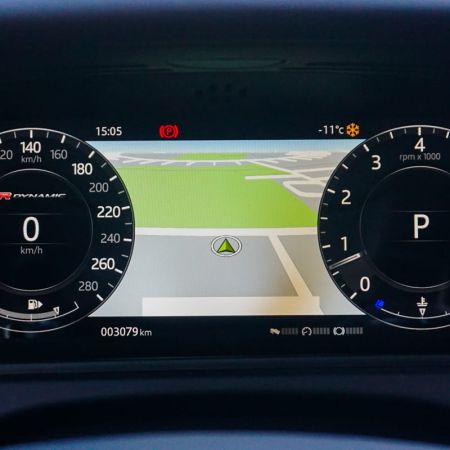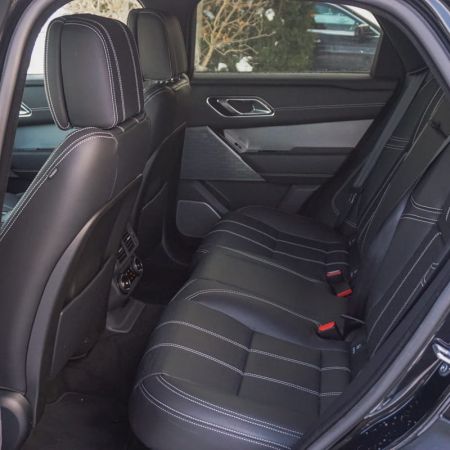Amidst all the familial requirements for three-row haulers, there’s a niche within the luxury crossover market. Within this particular segment are vehicles which provide to the younger demographic that wants the capability of all-wheel-drive combined with luxury and performance, and there’s somewhat of a compromise in the overall space department. The Porsche Macan (reviewed here) is a fantastic example of this, and a new entry in the class comes from Land Rover. The all-new 2018 Range Rover Velar P380 is the latest foray into the performance luxury crossover game, and we spent the holiday season with it.
Dressed handsomely in triple black, our Velar tester attracted eyes wherever it went, with the majority of people asking whether this is the new Range Rover Sport (reviewed here) or even the Evoque. The Velar sits in a previously unoccupied spot in the Range Rover lineup; directly above the Evoque and below the Range Rover Sport. If anything, it combines the best attributes of both, combining the svelte looks of the Evoque with the off-road prowess of the larger Range Rover models.
This is purely subjective, but the smart lines would look a lot better in a different colour – the black wheels and body accents just cause all the styling cues to blend together. Other notable styling cues include a projection of the vehicle’s profile from the rear view mirror onto the ground. Also, the door handles are flush with the Velar’s stunning body, and slide out electronically when the vehicle is unlocked. It seems like a gimmick at first but it looks spectacularly cool in operation.
The interior of the Velar is fresh and features stunning design never before seen in anything from JLR. A new infotainment system called “InControl Touch Pro Duo” makes its debut here, and contrary to what some geeks like myself may associate the name with, it isn’t related to the Sony Memory Stick of the past. Pro Duo combines two 10” touchscreens, one of which tilts outward from the leather dashboard when the car is turned on. It’s a slick system that has brilliant graphics and is very responsive to use.
The lower screen controls a variety of features including the seat heat/massage feature, as well as setting up the Velar’s drive settings. A fully digital instrument gauge cluster is also in play here, and offers plenty of customization within itself. At first, the plethora of screens and overall digital content can be overwhelming, and perhaps those that have a difficult time adapting to technology should look elsewhere. For the rest of us, once past the learning curve, InControl Touch works great, and is almost up there with BMW’s iDrive. The only thing we’d like to see added is the implementation of Apple CarPlay and Android Auto in future versions.
As for the rest of the Velar’s interior, it’s a wonderful place to spend time. The Windsor Leather seats are extremely comfortable and supportive, and the massage feature is very handy. The driving position is also perfect for a smaller crossover, though visibility out of the small rear window leaves a lot to be desired. All of the controls are in the right places and as expected from a premium European marque, material fit and finish is top notch.
Two powertrains are offered on the Velar, the entry-level D180 model being a 180-horsepower 2.0L turbocharged diesel four-cylinder. It’s torquey and does the job just fine, as we’ve seen in the Jaguar XE (reviewed here) application. The P380 example tested here offers a supercharged 3.0L V6, which offers a hefty 380 horsepower at 6,500RPM and 332 lb-ft. of torque at 3,500RPM. A ZF eight-speed automatic sends power to all four wheels, and save for the Macan, the Velar is definitely the dynamic champ of the crossover game.
Land Rover claims a 0-100km/h spring in as little as 5.7 seconds, and this is where the urgency of a supercharger comes in handy. Power comes on quick and hard, and almost lightens the 4,700lb. vehicle. It’s worth mentioning that the Velar is still a little bit slower than its lighter sibling, the Jaguar F-Pace (reviewed here) in “S” trim. It is quick, but the ride quality from the electronic air suspension (standard on the P380) is remarkable, maintaining composure exactly like a Range Rover should.
The electric power steering is comfortably hefty, and changes direction with ease. It’s a slower steering rack, so it takes a little getting used to, but there is an active self-parking system for those who find difficulty in placing their vehicle. Something that allows the Velar to stand out from its performance rivals is the actual ability to venture off road. The Terrain Response 2 system offers tailor-made settings to handle grass/gravel/snow, mud ruts, sand, and even a “Dynamic” setting. This works in collaboration with Low Traction Launch, All Terrain Progress Control, Hill Descent Control, and Gradient Response Control to make for one truly capable crossover.
Fuel economy for the Velar P380 is rated at 13.0L/100km city and 10.0L/100km highway, when operating on premium 91-octane fuel. Considering our test took place on winter tires in frigid conditions, the results were less than ideal. We averaged 12.9L/100km over a 600km test, with mixed driving. The fuel tank could be larger, because at 62L it requires refueling frequently.
Land Rover Canada prices the Velar at $62,000 to start, and the R-Dynamic tested here begins at $75,000 for the P380 motor (the diesel can be had for as little as $67,400 in R-Dynamic form). Add a bit for the top-trim HSE guise and you’re up to $82,600. The R-Dynamic Black Package adds $670, and extra options are aplenty. The Meridian Signature Sound System is $5,100, the HUD is $1,020, an off-road package with Terrain Response 2 is $510, Active Rear Locking Differential is $1,130, and a few miscellaneous options can easily bring the price to push $100,000.
The as-tested sticker here might be high, but a nicely equipped Velar can be had in the mid-$70,000 range, right in the same bracket as its rivals. For instance, the Audi SQ5 (reviewed here) is a more understated choice, but offers similar performance without the off-road capability for a close price. The Porsche Macan GTS (reviewed here) is a closer principle to the Velar, somewhat compromising interior space in favour of styling and performance, and is also nearly identical in price.
The 2018 Range Rover Velar P380 is definitely the exciting new kid on the block, meeting all expectations and exceeding some. This particular test vehicle is a bit much on the pricey options, but when equipped correctly, the Velar provides decent value within the luxury segment. We’ll be conducting a test on the diesel variant soon, as that provides all of the style with the added bonus of frugality at the pumps.

